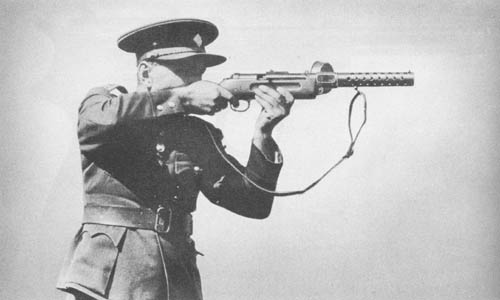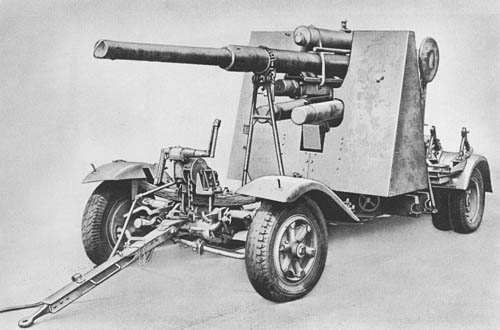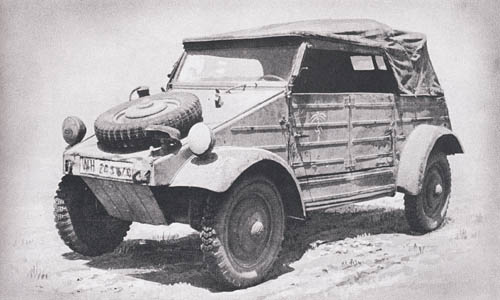
The 9 mm German Submachine Gun, M.P. 181, Germany’s original submachine gun introduced toward the end of the first World War, is still in use today. Several other models, modifications of this weapon, are, however, more widely used at the present time.
The gun is operated, like all the later types, by blowback action and carries on the left side a 32-round drum magazine of rather complicated design, consisting of a short straight portion terminating in a small drum. For loading, a lever in the bottom of the magazine is turned until a catch drops into a recess in the bottom plate, thereby taking the tension off the coil spring. The cartridges are then inserted into the mouth of the magazine. After it is fully loaded, the catch is released and pressure applied to the cartridges by the coil spring. A safety recess marked “S” is formed at the rear end of the cocking handle slot. To prepare for firing, the cocking handle is pulled back and rotated upward, the magazine is inserted, and the cocking handle is disengaged. There is no provision for single shots, the weapon being automatic.
SPECIFICATIONS
| Caliber | 9 mm (actually .347 in.) | |
| Weight | 9 lb., 2 oz. without magazine | |
| Length | 32 ins. | |
| Rate of fire | 550 rds./min.—cyclic | |
| Ammunition | 9 mm Parabellum | |
| Effective range | 218 yds. |
German: p. 204

